
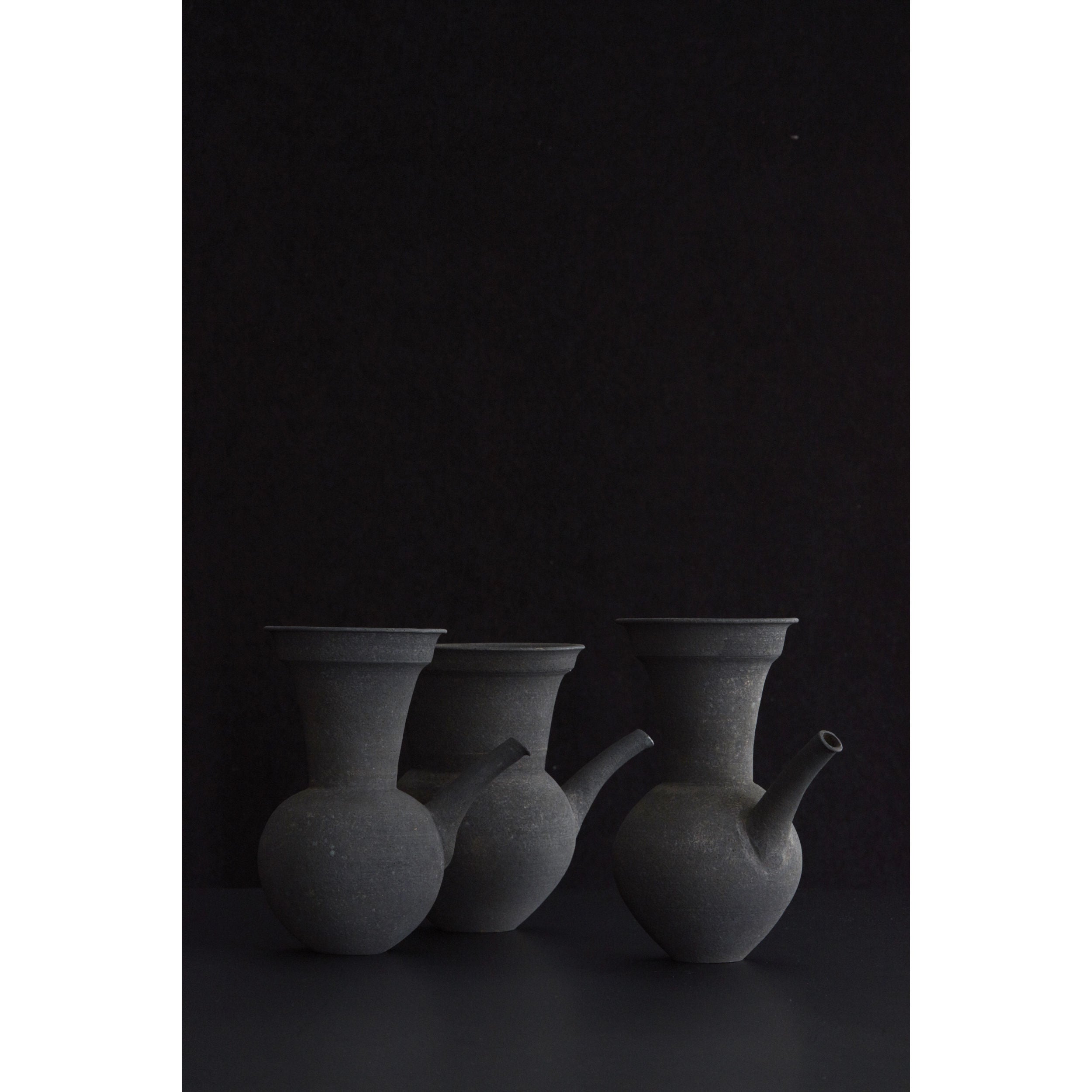
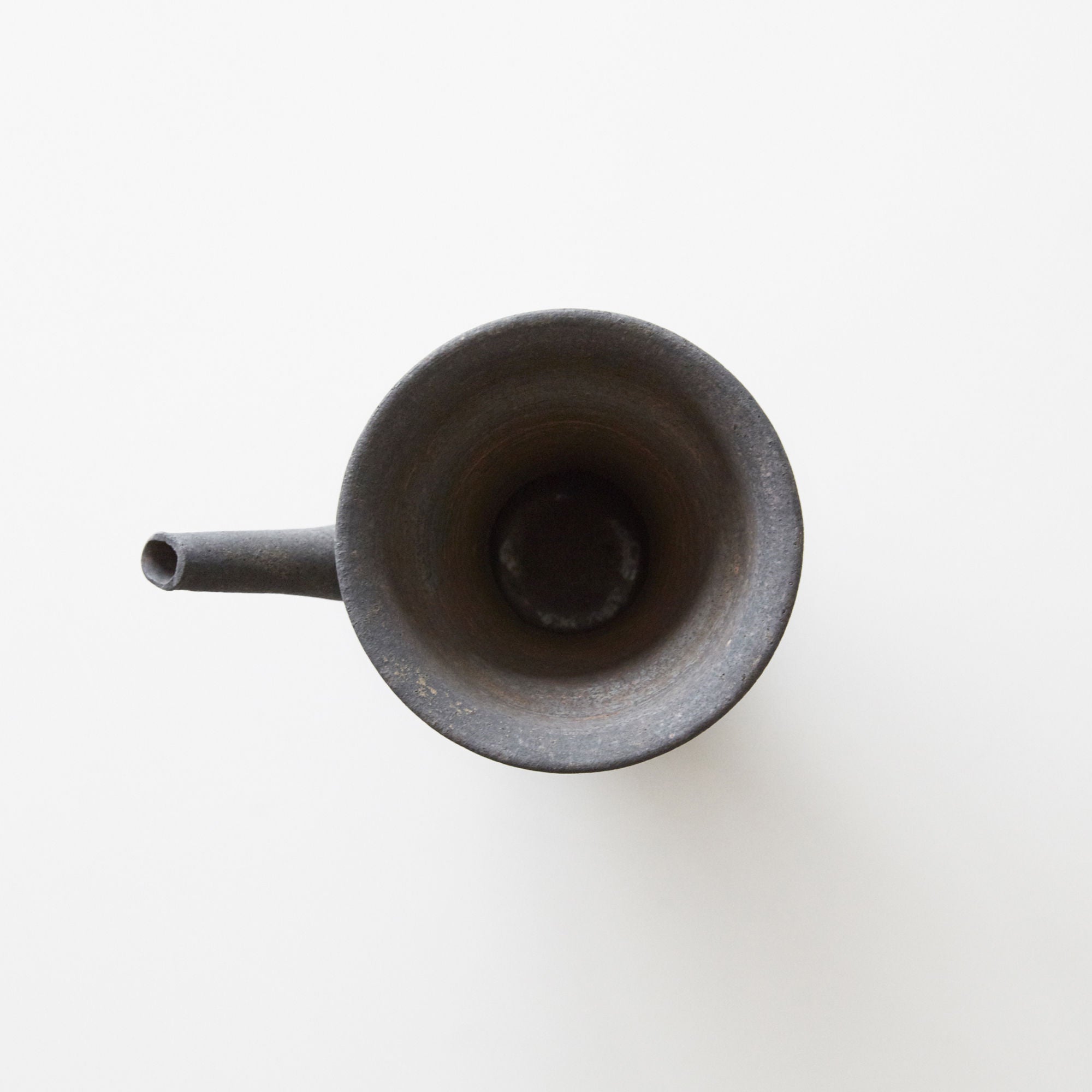
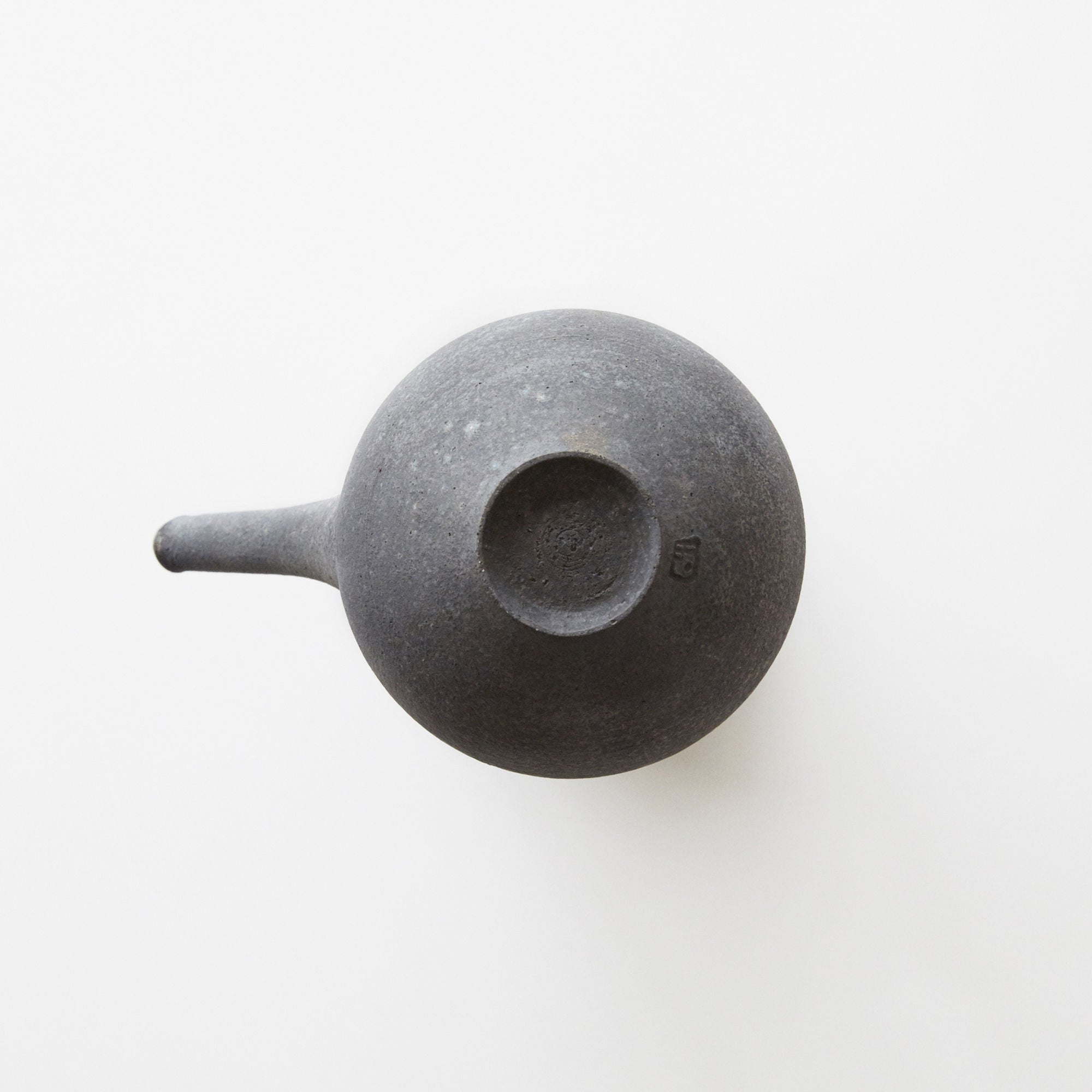
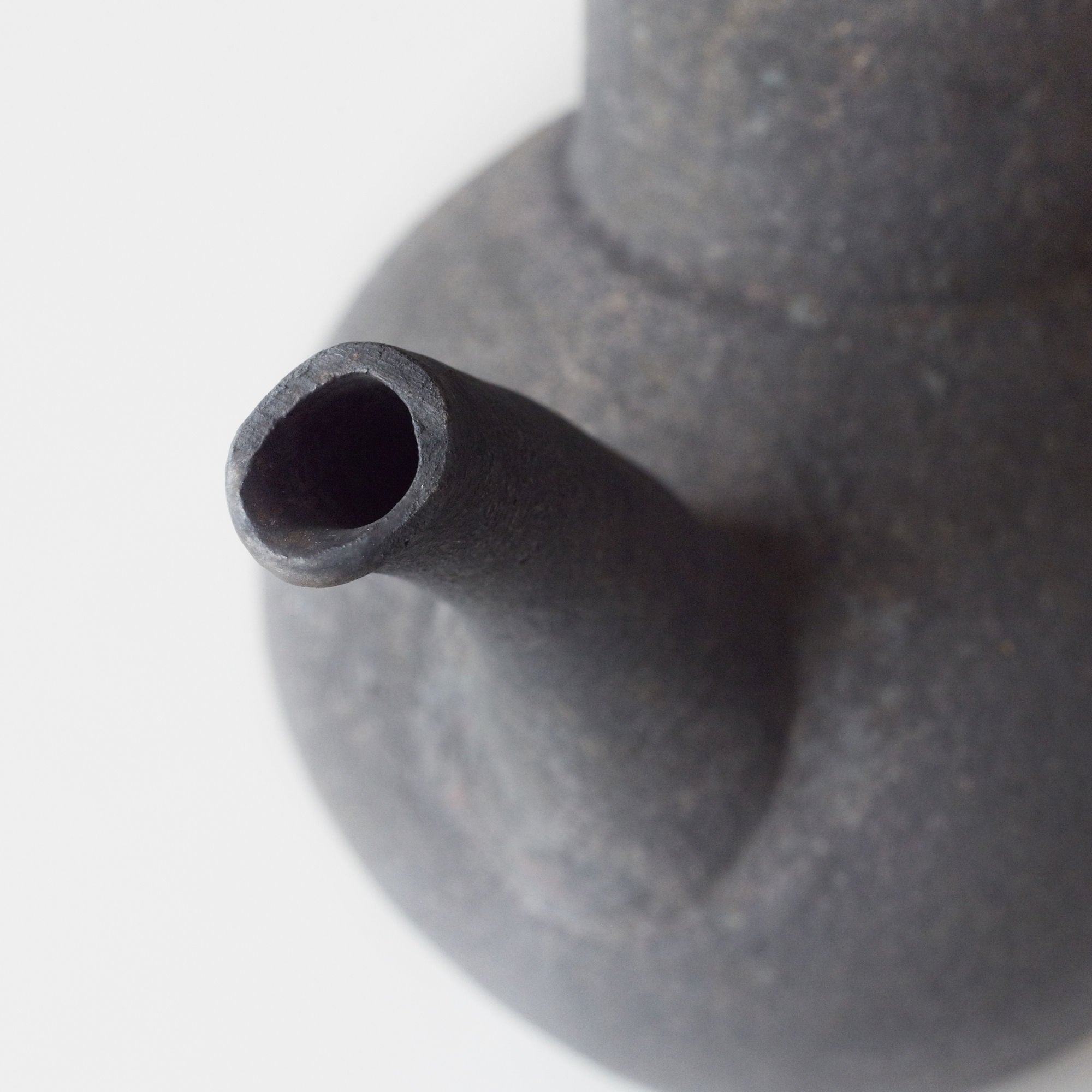

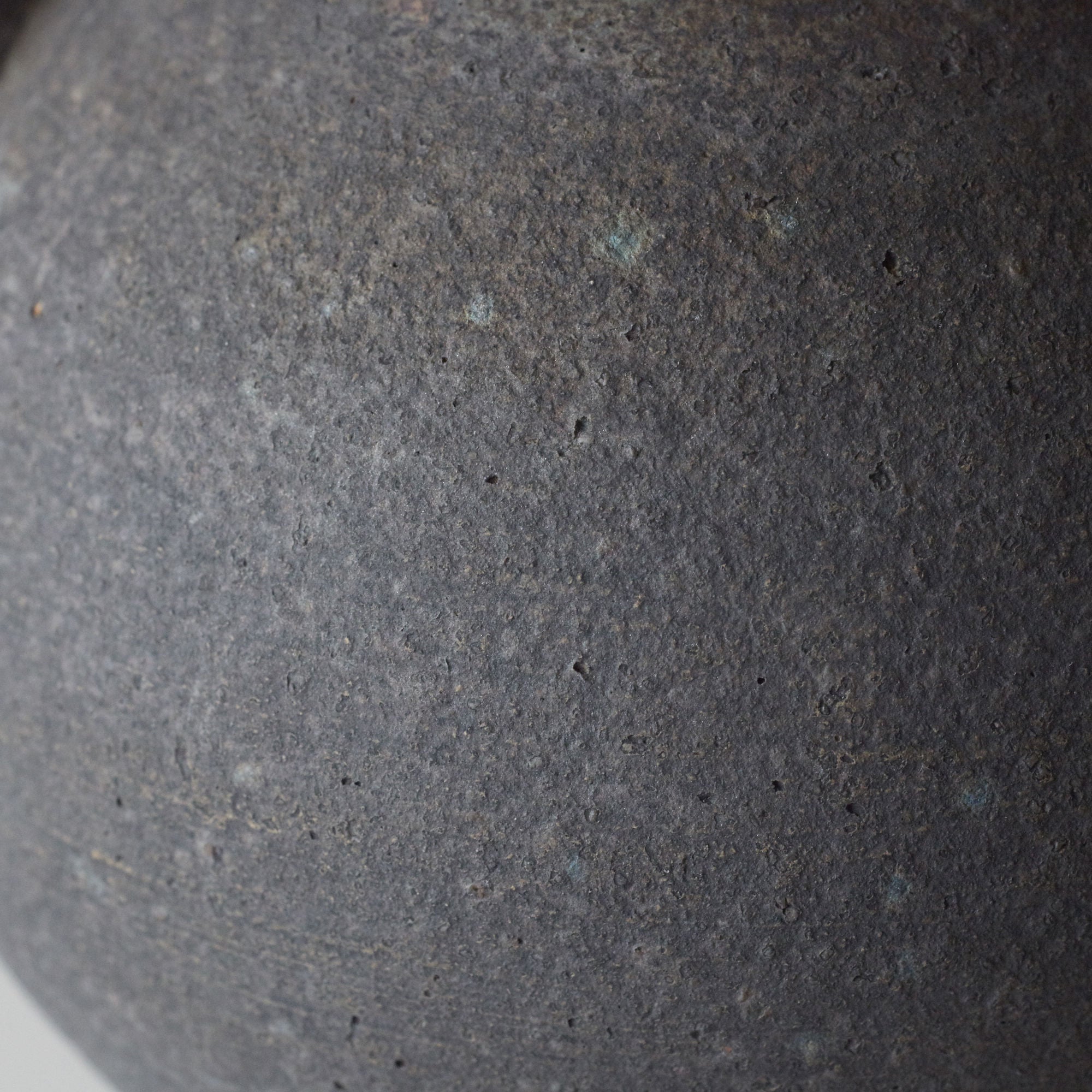
Rust-Ginsai Sue-style Noteware (B)
Tax excluded. Shipping calculated at checkout
・ギフト包装をご希望の方は、こちらから商品と一緒にご注文ください。
Mr. Tamaki seems to have an extraordinary passion for this Sue-type pottery.
In the first place, this form of Sueki was made about 1,500 years ago.
After the Jomon and Yayoi periods and entering the Kofun period, techniques imported from the Korean Peninsula led to the use of anagama kilns. was used as a drinking vessel.
A 1,500-year-old potter's wheel that could never spin as fast as it does today. Even so, Mr. Tamaki was mysteriously moved by the technique of the pioneer potter who made it thin and light.
The degree of perfection of this Sueki is the result of many generations of work accumulated by our predecessors, and there is beauty that cannot be resisted.
According to Tamaki, "I'm going to remake it like this so as not to destroy the fragments of the thoughts of my predecessors, but I can't help but respect that there are still new discoveries."
The excavated ancient Sue ware has a hole in the body, and it is said that sake was poured into it by inserting a bamboo cylinder. Instead, Tamaki opted for a gracefully curved spout like a crane neck.
The Sue-type pouring vessel has a slim waist, and the appearance of holding and pouring seems to be stylish.
The texture of rust silver color seems to make sake mellow, and it seems to go well with primitive sake such as doburoku. Sip slowly while thinking about the story of Sueki. It is a sake cup that is suitable for such situations.
The problem is that neither I nor Tamaki who is writing this can drink a single drop of alcohol.
Diameter: Approx. 9.5cm / Height: Approx. 17.5cm
Since it is overpainted with rust silver and oxidized to finish, it will change to a darker texture as it is used. In addition, polishing naturally brings out the silver and enhances the texture. At the beginning of use, silver oxide soot may adhere to the surface, but there is no problem with eating.
Since Sabi-Ginsai reacts to acid, it will discolor if it comes in contact with acidic foods such as vinegar or vinegar, or if it comes in contact with metal such as aluminum foil.
After use, gently wash it with a sponge and let it dry naturally, or wipe it gently with a cloth.
Ito Kan
Born in 1971. After graduating from Osaka University of Arts, studied under Hikaru Yamada (founder of Sodeisha) in Kyoto. After competing with young artists from around the world at the Shigaraki Pottery Forest, he returned to his hometown of Akizuki and made pottery with his father, Mr. Nitto Tachibana. Opened kiln in Misaki, Miura City, Kanagawa Prefecture in 2006. Moved to Okayama City, Okayama Prefecture in 2012.
*After use, remove dirt as soon as possible and dry thoroughly.
*Do not use microwave, oven or dishwasher
*No returns or refunds will be accepted. Please understand this when purchasing.
当店で購入した作品をメルカリ等で高額で転売されている方がいます。当店の作品は転売目的の方には販売しておらず、一切の転売行為は禁止しています。当店の作品をご購入される際、転売行為の禁止について承諾したものとさせて頂きます。
令和2年7月23日
Choose options







